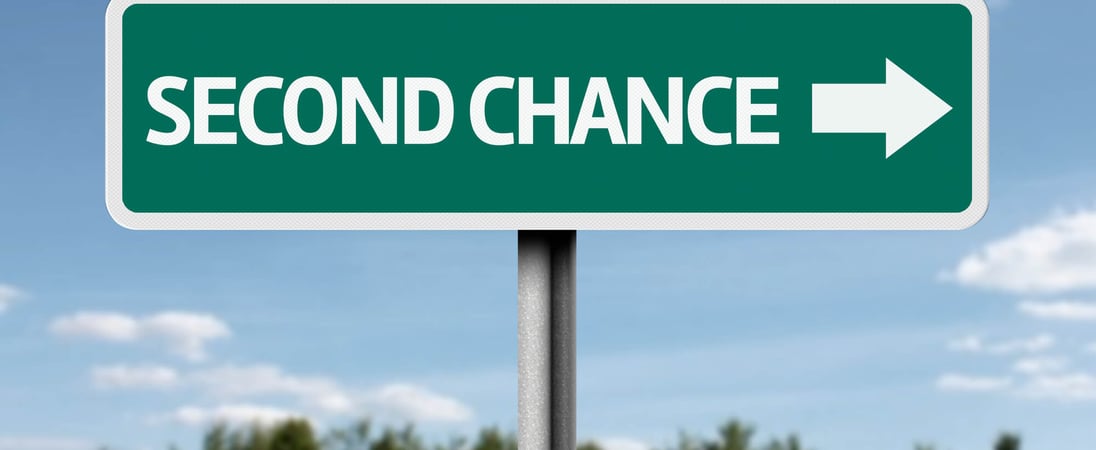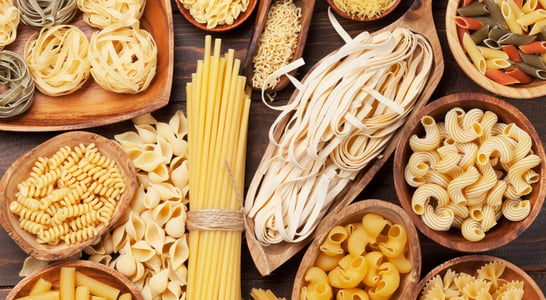
National Mulligan Day
Inspired by golf's do-over stroke, celebrate Mulligan Day with second chances, or simply enjoy a relaxed round of golf.
Give yourself a second chance on National Mulligan Day.
Whether it is a former relationship with a friend or loved one, an old hobby that you abandoned or a past mistake that needs rectifying, you can give it another go on National Mulligan Day.
How to Celebrate National Mulligan Day
So, celebrate National Mulligan Day by giving yourself another chance to do something that previously went wrong.
Golf courses will usually hold a National Mulligan Day celebration where golfers can play again for free at a later date. You could also join in by making Mulligan Stew which is a ‘second-chance’ meal made from the leftovers of previous meals.
One way to celebrate National Mulligan Day is by going down the literal route and having a good old game of golf! If you’re new to golf, you will need to get yourself some equipment!
There are a few myths out there when it comes to getting the right golf clubs. First and foremost, a lot of people believe that the longer the length of the golf club, the further they are going to hit the ball.
Actually, this couldn’t be further from the truth. One thing you need to recognise is that longer clubs can be more difficult to use.
Moreover, greater clubhead speed only really occurs in those who have late releases. If you have a shorter release, you may find you deliver slower clubhead speed when using a longer club.
Another myth is that the shaft is the engine of the golf club. Actually, the golfer is the engine. You should see the shaft as more of the transmission.
No matter your level of experience, the shaft weight is a vital element in the performance and fitting of all golf clubs. A lot of people also assume that tour grind sole designs on wedges and irons are better left for the professionals.
In fact, this type of sole shape, which relates to a pronounced sole radius across the surface from the face to back, can benefit all types of players.
There is even an argument to say that this is more important for lesser skilled golfers. However, as this is National Mulligan Day, one thing you definitely should not be afraid of is making a mistake.
Aside from playing a round of traditional golf, why not play a game of mini golf? This is something that everyone can get involved in, and you can have a lot of fun!
There are lots of crazy golf venues all around the world, so you are bound to be able to find one that is not too far away from you.
We have also seen topgolf take off in recent years as well. This is a game whereby you hit microchipped golf balls onto an outfield that has giant dartboard-like targets. This is a great way to have fun with your friends and loved ones and to gather all of the family together!
Of course, you do not need to focus on the golf side of things on National Mulligan Day. After all, this day is about second chances and doing something again.
There are a number of ways you can pay honor to this notion. For example, why not have fun experimenting with leftovers? When you have food left over from the night before, what do you do with it? Do you usually chuck it into the bin? Why waste it?
Instead, you can try out different recipes and see what you can come up with? If things don’t go quite to plan, it doesn’t matter!
You can also use National Mulligan Day as an opportunity to learn some new skills. Whether this is playing an instrument or mastering a second language, use this day as the catalyst to help you try out something new.
You should not have any fear of failing or needing to do something again and again in order to get it right. After all, the struggle is what makes the achievement even more enjoyable at the end, and it is definitely better to try than to not give it any sort of effort at all, right?
Learn about National Mulligan Day
Commonly used in games such as golf, the term ‘mulligan’ derives from the 1920s when Canadian golfer David Mulligan made a mistake during a game and retook his shot. Since then, to ‘call a mulligan’ means the chance to try again.
Everyone deserves to have a second chance in life, right? And this is what National Mulligan Day is all about. If you don’t succeed at first, try and try again!
After all, we aren’t all perfect. We are going to make mistakes. We should not feel bad about doing something wrong. We should see it as an opportunity to learn and to do it better the following time.
There are a number of different reasons why National Mulligan Day is such a good day to celebrate! After all, aren’t second chances good for everyone?
Although we always want to do things correctly right away, immediate success is not always possible. In fact, it is very rare. We should embrace our human faults. Don’t simply admit failure and give up. Instead, take a deep breath, think about where you went wrong, learn from it, and try it again.
Overall, National Mulligan Day is a positive day because it helps us to be more confident and accepting of ourselves, and we can also use the day to encourage other people too.
When you see someone failing at something or struggling to get it right, you shouldn’t laugh at them or discourage them.
You should give them encouragement, and offer them advice if they would like some. Imagine how much of a better place the world would be if we all had this sort of attitude and helped one and other to achieve their goals!
History of Mulligan Day
National Mulligan Day was created by C. Daniel Rhodes of Hoover, Alabama, who wanted a day that was all about second chances.
In order to understand National Mulligan Day, we need to take a look at the different uses of this theory. While we use this to refer to the golfer, there have been a number of different takes on Mulligan theory throughout history.
For example, we can date this back as far as 1793, when the term “mulligan” was used in reference to Thomas Mulligan. He was a passionate golfer and a minor Anglo-Irish aristocrat.
It was then in the 1920s that the Canadian golfer, David Bernard Mulligan, would ask for a second shot off the first tee.
This was when the term “mulligan” was coined and became more widespread. It was in the 1940s that the term was approved by the United States Golf Association for widespread use. It was not until later, in 1985, that David Mulligan actually confirmed the story about his additional shots in an interview.
National Mulligan Day FAQs
How did the term “mulligan” become popular in card games?
In card games like Magic: The Gathering, a “mulligan” allows players to redraw their opening hand if dissatisfied. This practice, inspired by golf’s do-over concept, helps ensure a fair start for all participants.
What is a “gilligan” in golf, and how does it differ from a mulligan?
A “gilligan” is the opposite of a mulligan. Instead of replaying a poor shot, an opponent can request a player to redo a successful shot, adding a playful twist to the game.
How has the concept of a mulligan influenced business practices?
In the business world, a “mulligan” symbolizes the opportunity to rectify a failed project or decision.
Companies may implement policies allowing teams to revisit and improve unsuccessful initiatives, fostering innovation and resilience.
Are there any famous literary references to the idea of a mulligan?
James Joyce’s novel “Ulysses” features a character named Mulligan.
While not directly related to the do-over concept, the character’s presence has sparked discussions about second chances and new beginnings in literature.
How do sports teams incorporate the mulligan concept into their training?
Coaches often allow athletes to repeat drills or plays after mistakes, providing a “mulligan” to reinforce learning and build confidence. This approach emphasizes growth through practice and resilience.
What role do mulligans play in charity golf tournaments?
In charity golf events, participants can purchase mulligans, allowing extra shots during the game. This practice raises additional funds for the cause and adds a fun element for amateur players.
How is National Mulligan Day used to promote personal growth?
Individuals use National Mulligan Day as a prompt to reflect on past mistakes and set new goals. It’s an opportunity to forgive oneself, learn from errors, and embrace fresh starts in various life aspects.
Are there any digital or video games that feature a mulligan mechanic?
Many video games offer “retry” options, akin to mulligans, allowing players to redo challenges without starting over entirely. This feature enhances enjoyment and reduces frustration, encouraging continued play.
How do educational institutions apply the mulligan principle?
Some schools implement policies where students can retake tests or assignments to improve their understanding and grades. This approach fosters a growth mindset and emphasizes learning over initial performance.
What are some misconceptions about taking mulligans in casual golf games?
A common misconception is that mulligans are universally accepted in casual play. However, their use varies among groups, and it’s essential to agree on guidelines before starting a round to ensure fairness and enjoyment.
Also on ...
View all holidaysNational Pasta Day
No matter where it started or how it became so popular, pasta is a simple and versatile dish that is absolutely worth celebrating.
We think you may also like...
Humiliation Day
Being open to learn from others, recognizing your strengths and weaknesses, and embracing mistakes are great ways to grow and improve oneself.
Loneliness Awareness Week
Exploring the impact of social isolation reveals profound insights into mental health, well-being, and community connections.








